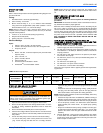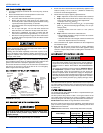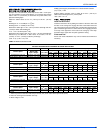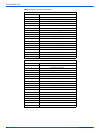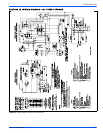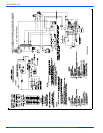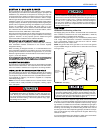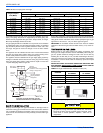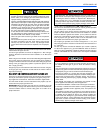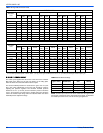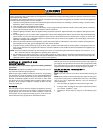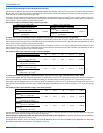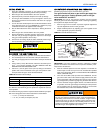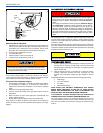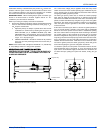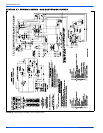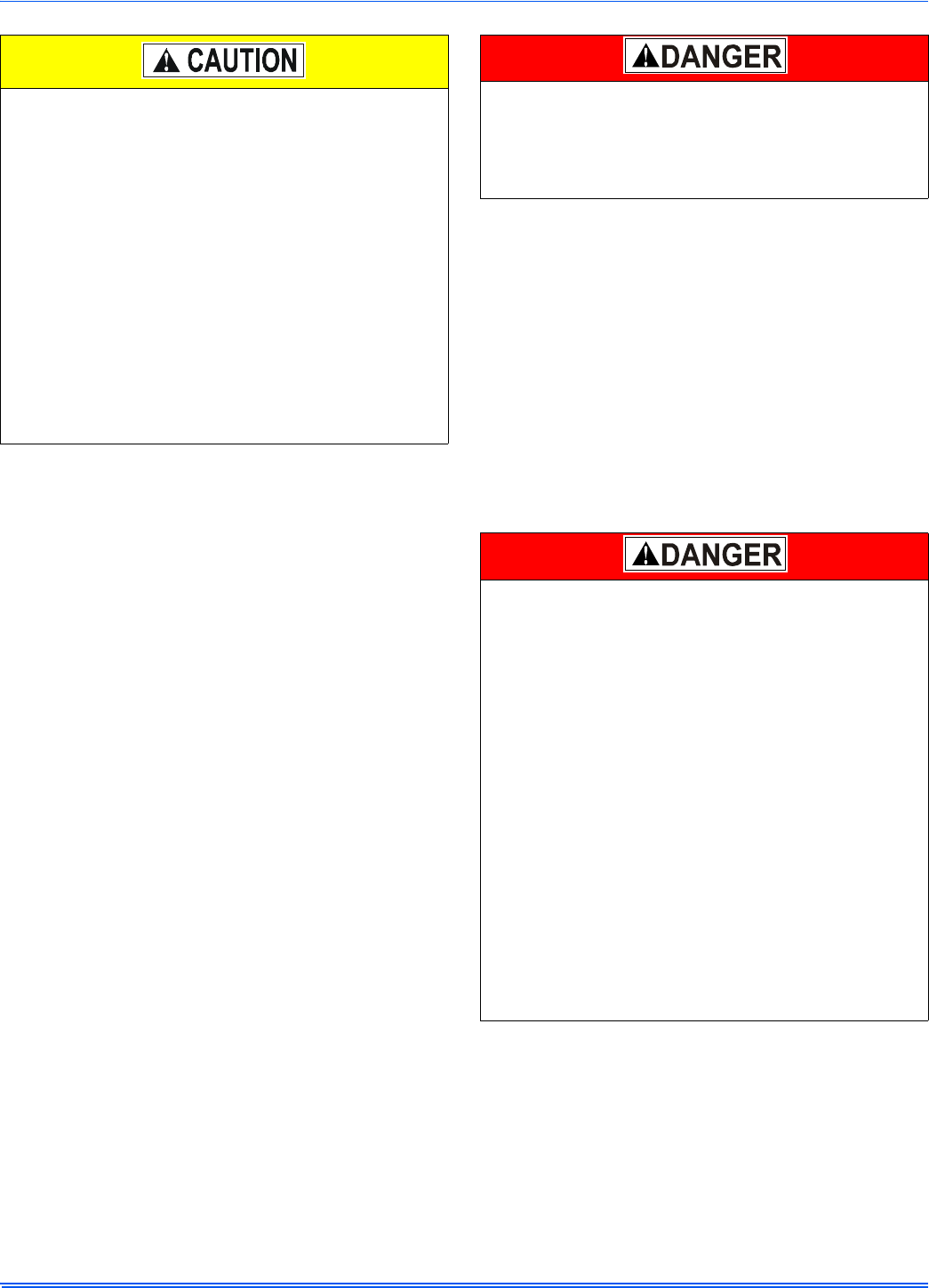
107272-UIM-B-1105
Unitary Products Group 31
A drip leg is required by some local codes to trap moisture and contam-
inations. Refer to Figure 39 or 40.
For natural gas operation, the furnace is designed for 7" W.C. inlet gas
pressure. Pressure to main burner is then reduced to 3 1/2" W.C at the
gas valve.
Refer to Figure 42 for location of Gas Valve Main Regulator Adjustment.
The furnace must be isolated from the gas supply piping system by
closing its individual external manual shut-off valve during any pressure
testing of the gas supply piping system at pressures equal to or less
than 1/2 psig (3.5 kPa).
Gas piping may be connected from either side of the furnace using any
of the gas pipe entry knockouts on both sides of the furnace. Refer to
Figure 39, Gas Piping.
GAS ORIFICE CONVERSION FOR PROPANE (LP)
This burner is constructed at the factory for natural gas-fired operation,
but may be converted to operate on propane (LP) gas by using a fac-
tory-supplied LP conversion kit. Follow the instructions supplied with
the LP kit. Refer to Table 18 or the instructions in the propane (LP) con-
version kit for the proper gas orifice size.
IMPORTANT: When converting gas valve from or to Propane gas, it will
be necessary to change main burner orifice to prevent an underfired or
overfired condition. Refer to furnace rating plate or to Table 18 for
proper orifice size.
HIGH ALTITUDE GAS ORIFICE CONVERSION
This furnace is constructed at the factory for natural gas-fired operation
at 0 – 2,000 ft. (0 m – 610 m) above sea level.
The gas orifices on this furnace must be changed in order to maintain
proper and safe operation, when the furnace is installed in a location
where the altitude is greater than 2,000 ft. (610 m) above sea level on
natural gas or the altitude is greater than 4,000 ft. (1219 m) above sea
level on propane (LP) gas. Refer to Table 18 or the instructions in the
high altitude conversion kit for the proper gas orifice size.
For Propane gas operation, the furnace is designed for 11" w.c. (2.74
kPa) inlet gas pressure. Pressure to main burner is then reduced to 3.5"
w.c. (0.87 kPa).
The unit may also be converted for altitudes up to 10,000 ft. (3048 m)
on natural and propane (LP) gas with additional derate as shown in
Table 18 or refer to ANSI Z223.1 NFPA 54 National Fuel Gas Code or in
Canada CAN/CGA-B149.1-00 Natural Gas and Propane Installation
Code.
To install gas line and to connect it to the gas valve, care must
be taken to hold gas valve firmly to prevent misalignment of the
burner orifice, or to damage gas valve which could result in
improper heating, explosion, fire or asphyxiation.
DO NOT USE EXCESSIVE PIPE SEALANT ON PIPE JOINTS.
Pipe sealant, metal chips or other foreign material that could be
deposited in the inlet of the gas valve, when gas pipe is installed
or carried through the gas piping into the gas valve inlet after
installation, may cause the gas valve to malfunction and could
result in possible improper heating, explosion, fire or asphyxia-
tion. Also, pipe sealant must be resistant to Propane gas.
A main shut-off valve shall be installed externally of furnace cas-
ing. After piping has been installed, turn gas on and check all
connections with a leak detector or soap solution.
Never use open flame to test for gas leaks as fire or explosion
could occur.
Do not test the fuel system at more than 14" W.C. after furnace
has been connected to fuel line. Such testing could void the
warranty. Any test run above 14" W.C. may damage furnace
control valve which could cause an explosion, fire or asphyxia-
tion.
The manifold pressure does not change when converting to Natural
or Propane Gas. The manifold pressure is 3.5 in w.c. (0.87 kPa) on
both Natural and Propane Gas. Change only the gas orifice when
converting this burner to Natural or Propane Gas. Manifold pres-
sure in excess of 4.0 in w.c (0.99 kPa) can cause premature heat
exchanger failure. High levels of carbon monoxide, excessive soot-
ing, a fire hazard, personal injury, property damage, and/or death.
PROPANE AND HIGH ALTITUDE CONVERSION KITS
It is very important to choose the correct kit and/or gas orifices for
the altitude and the type of gas for which the furnace is being
installed.
Only use natural gas in furnaces designed for natural gas. Only use
propane (LP) gas for furnaces that have been properly converted to
use propane (LP) gas. Do not use this furnace with butane gas.
Incorrect gas orifices or a furnace that has been improperly con-
verted will create an extremely dangerous condition resulting in pre-
mature heat exchanger failure, excessive sooting, high levels of
carbon monoxide, personal injury, property damage, a fire hazard
and/or death.
High altitude and propane (LP) conversions are required in order
for the appliance to satisfactory meet the application.
An authorized distributor or dealer must make all gas conversions.
In Canada, a certified conversion station or other qualified agency,
using factory specified and/or approved parts, must perform the
conversion.
The installer must take every precaution to insure that the furnace
has been converted to the proper gas orifice size when the furnace
is installed. Do not attempt to drill out any orifices to obtain the
proper orifice size. Drilling out a gas orifice will cause misalignment
of the burner flames, causing premature heat exchanger burnout,
high levels of carbon monoxide, excessive sooting, a fire hazard,
personal injury, property damage and/or death.



